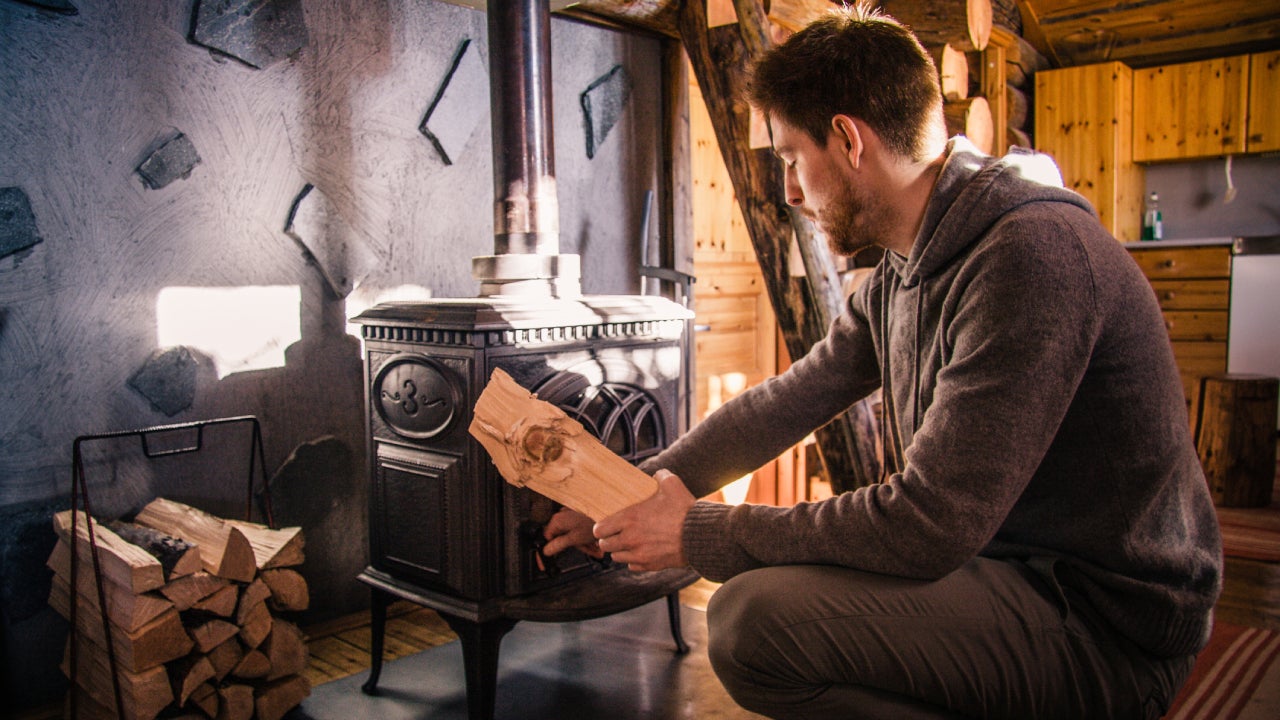
4,000 house fires are caused by wood stoves each year, according to Environmental Protection Agency (EPA) estimates. If you use a wood stove each winter to heat your home, it is possible you could be paying more for homeowners insurance than your neighbors who only use an HVAC system. When it comes to heating sources in your home, it is important to understand the risks associated and what insurance considerations should be kept top of mind.
Does homeowners insurance cover wood stoves?
The EPA estimates that approximately 10.1 million wood stoves are in operation across the U.S, and that 65% of all wood stoves are old, inefficient and possibly dangerous, due to leaking fumes and confined fires within chimneys and flues. Because of this risk, homeowners insurance companies may adjust rates accordingly for anyone using a wood stove as a major source of heat.
Having a wood stove does not always disqualify you for coverage with most providers. However, it is very likely your provider will want to verify it is properly installed. Fortunately, this process may be as easy as taking a picture of your wood stove to ensure your approval for a policy is not delayed. Insurance companies may want to verify the following:
- Your wood stove’s make and model
- The stove’s connection to your home’s chimney
- The proper amount of fire guards are in place (such as a fire safety rug)
If it cannot verify any of the above information in a photo, or if a more comprehensive evaluation is required, your provider may require an inspector to come to your home and inspect your wood stove.
Requirements for wood-burning stoves
If the wood stove is old and has been in place for a while, your provider may have some requirements to fulfill. Having the wood stove inspected by a certified technician to ensure it complies with local code regulations may be a part of that process. Fire codes frequently change, and the old stove may not meet today’s standards.
If you are planning on putting a wood stove in your home, it is generally advised to get a licensed contractor to install it for you. When not properly installed, wood stoves put houses at a severe risk of fire and extensive damage. Smoke can spread quickly throughout the house and lead to carbon monoxide poisoning, and chimney fires can rapidly escalate to whole house fires. For context, the EPA estimated that house fires accounted for 400 deaths, 1,520 injuries, as well as billions of dollars in damages in 2011 alone.
An inspection is of great importance because if it is determined during a claim that a house fire was caused by an improperly installed wood stove, you might not qualify to receive a payout. In a worst-case scenario in which your house is burned down, this could have disastrous financial impact.
Do wood stoves increase homeowners insurance rates?
In many cases, the added risk of a wood stove could increase a homeowners insurance premium. This is because the likelihood of your home being damaged by a fire is significantly increased with the presence of a wood stove.
Compared to other types of heating methods, wood stoves are considerably more dangerous. For example, a gas and electric fireplace do not have:
- Smoke
- Ash
- Creosote/soot buildup
- Backdrafts
Furthermore, to start gas or electric fireplaces does not require any matches or fire starters, which makes them even safer.
Wood stoves are dramatically different in how they are activated. To start a wood stove, you must first establish or enable a draft within the fireplace to prevent smoke build-up. Once the draft is started, kindling is burned beneath larger stacks of wood with the wood stove’s door open. This step alone presents two risks: popping embers onto the floor, and smoke accumulation inside the home.
Aside from the initial risks involved in starting a wood stove, they present a long-term risk, too: the accumulation of creosote within the chimney, which is both cancerous and highly flammable. Over time creosote can catch fire within the chimney, putting the whole house at risk unless a steel liner is properly installed.
Overall, there are multiple risks involved with wood stoves compared to other home heating methods.
Wood stoves versus pellet stoves
Both a wood stove and a pellet stove burn wood, but a pellet stove burns smaller (manmade) portions of wood compared to a wood stove. Typically, pellet stoves require less ‘tending to’ than wood stoves. As pellets are burned, an onboard computer system detects when more pellets are needed and automatically adds them to the fire. Consequently, with a pellet stove, it’s easier to control how hot you want your pellet stove to get, making it more heat efficient than most wood stoves.
Both a pellet and a wood burning stove require a trained professional to install them, as both need to be properly sealed and connected to a chimney or vent. However, a wood stove requires a chimney whereas a pellet stove can be connected to either a chimney or vent. Therefore, with a pellet stove there is more flexibility when it comes to placement. As long as it has the proper amount of clearance and ventilation around it, it can be placed virtually anywhere in your home. Your woodstove, however, must go wherever your chimney is. The impact to your insurance with a pellet stove will likely vary by provider, so when setting up a homeowners policy, be sure to discuss the implications or requirements involved.
Wood stoves and pellet stoves have different risks and other practical considerations to keep in mind:
Wood stoves
Pros:
- Wood is cheaper than pellets
- Does not need an electrical power source
- Lasts for years
- Low operating costs if near locally sourced wood supply
Cons:
- Less efficient than a pellet stove
- Requires regular maintenance throughout the year if it is your primary heating source
- Considered more dangerous to operate than a pellet stove
- Woodpile in or near house may attract pests (such as hiding rodents or termites) which could cause damage to your home
- More expensive to buy and install than a pellet stove
Pellet stoves
Pros:
- Heat is easier to control and is more efficient
- It is cheaper to operate and maintain
- Installation is cheap and fast
- Safer to operate than a wood stove
- Better for the environment
Cons:
- Requires an electrical source
- Does not last as long as a wood stove
- Pellets must be kept indoors away from pests
- Pellets can be harder to source than traditional firewood
"wood" - Google News
May 21, 2021 at 08:23PM
https://ift.tt/3fF9QUM
Does homeowners insurance cover wood stoves? - Bankrate.com
"wood" - Google News
https://ift.tt/3du6D7I

No comments:
Post a Comment